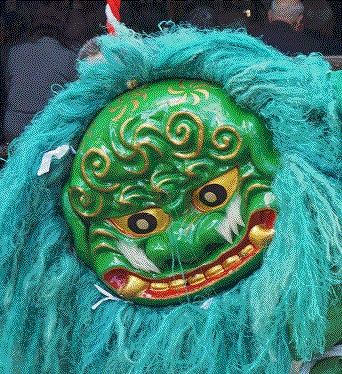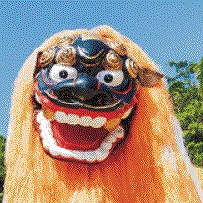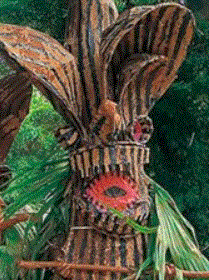The most detailed Japanese traditional mask
Japan has created various masks in their culture of history. The numbers are too many to show all of them. This sight will try to explain Japanese traditional masks as much as possible from history and to classify. We won’t surgical masks or the masks of samurai.
History
The oldest mask remains in Nara prefecture. It was discovered from the old tomb (AD 3rd Century). It was made from wood. People suppose this was for some ceremony.
*the right side picture https://www.nippon-1.net/cgi-bin/database.cgi?tid=list_kiroku&print=1&equal2=%93%FA%96%7B%8D%C5%8C%C3%82%CC%96%D8%90%BB%89%BC%96%CA
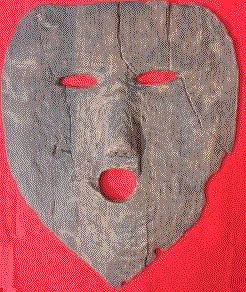
It is said that the time the culture of masks started was Nara period (7~8th C). The culture was introduced from China through the Korean Peninsula with Buddhism. It is called “Gigaku” and “Bugaku (or “Gagaku”). It is said that “Gigaku” was played to let people know about Buddhism. Unfortunately, we don’t know exactly how they played it . Only the masks remain.



”Bugaku (Gagaku)” has been played at the Imperial Court of Japan and shrine in annual events. They use many old instruments and play in old style.


https://www.hiroshima-kankou.com/event/9596

https://bunkakouryu.or.jp/archives/252/
In 14th century, folk performing arts and impersonation arts combined and blended many folk arts to “Noh”, and “Kyogen”. These are played on the stage until now, they are said to be the oldest remaining stage play in the world. In “Noh” play, ghosts play the main role, and players are represented by wearing masks. So, “Noh” created various masks. It is said that there are over 200 kinds.
In 17th century, many experts made various masks because people desire fun and festivals to flourish in each region.
Kinds of masks~Noh
*All of these Noh mask pictures were taken from the book 「能面の世界」平凡社 2012
There are currently more than 200 types of masks in Noh. Here are some of the most representative ones. Then, let’s show various Noh masks.

“Onna” (Koomote)
It means a woman. This mask represents a young woman. This is the most famous Noh mask. The mask many Japanese imagine when they think of “Noh mask” is this.
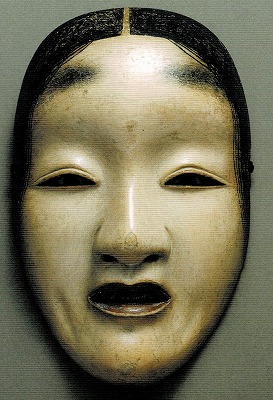
“Onna“
This mask represents an old woman.
There are various woman masks.
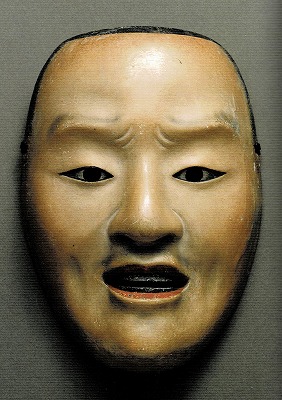
“Otoko“
It means a man. The masks of men have various kinds, this is the typical one.

“Otoko” (Doji)
Doji means a child.

“Beshimi“
This mask’s face represents the state of shutting the mouth tightly. It is often used to represent “out of human”.
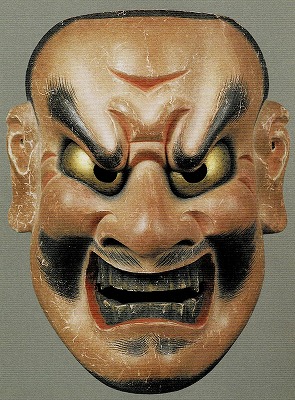
“Shikami“
This mask opens it’s mouth widely. It makes a pair with “Beshimi”. It represents ogres and so on.
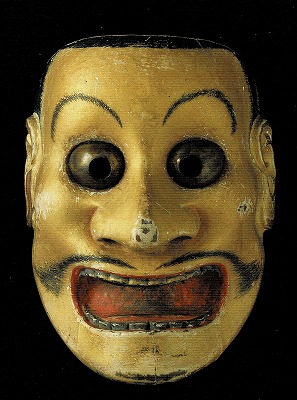
“Tobide“
This mask’s eyes are popping out. It represents having extraordinary power. It is often used to represent a deity.

“Hannya“
This mask is one of the most famous Japanese masks. This mask is, in fact, a woman. A woman who transformed into an ogre from grudge and jealousy.

“Okina“
This mask’s face is an old man’s. This is the standard and special mask for Noh players. When they play wearing this mask, they are doing a special ceremony. His face symbolizes longevity and peace.
Kinds of Masks~Bugaku (Gagaku)
*All of these mask picture were taken from the book 「日本の伝統芸能 1 雅楽」小峰書店 1998
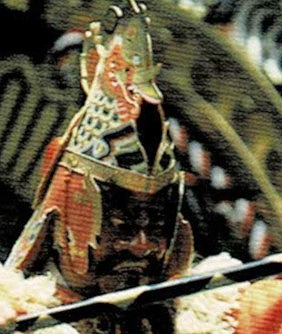


”Gagaku” is Japanese Imperial Court Music and Dance. “Bugaku” is the dance accompanied with various instruments. It is said that this music and dance came over from the Eurasian Continent through China and Korea in around the 5th Century. The elegant music needs various special old instruments. In addition it is held in the Imperial Court, in famous shrines or theaters. Itsukushima shrine (Hiroshima prefecture), Hikawa shrine (Saitama prefecture) and Shitennoji-temple (Osaka prefecture) and so on.
Various folk masks
There are various kinds of masks used in scenes other than “Noh” and “Bugaku” in Japan. We can see them at festivals, annual events and Kagura events*.
*about Kagura→Reference→What’s Kagura?
Hyottoko


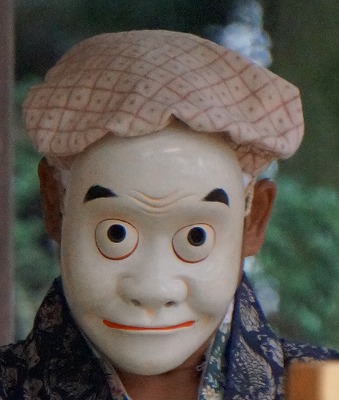
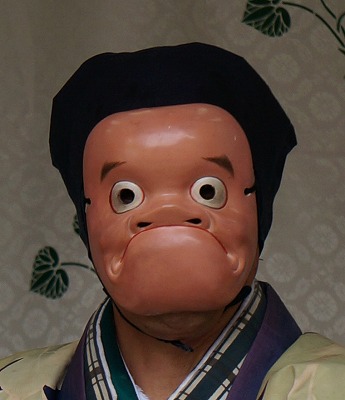
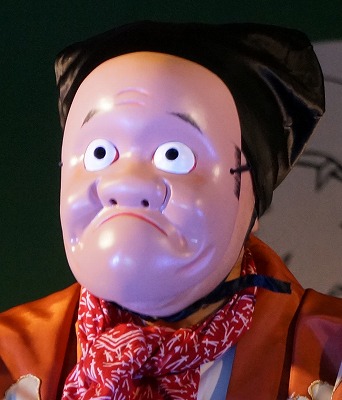
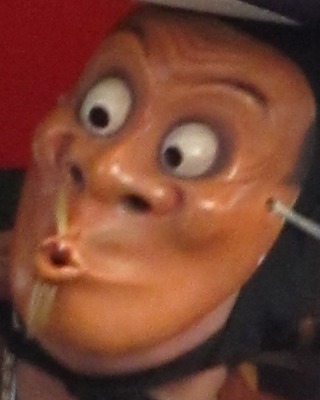
”Hyottoko” is a comedian like the clown. Originally, Hyottoko represented a man who blows fire by bellows to make iron, so he basically puckers up his mouth. In “Kagura” (traditional folk play), the comedian was called “Modoki“. It means to imitate and fail. They are lovely characters.
Okame (Otafuku)
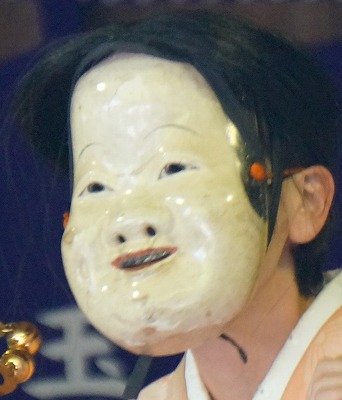

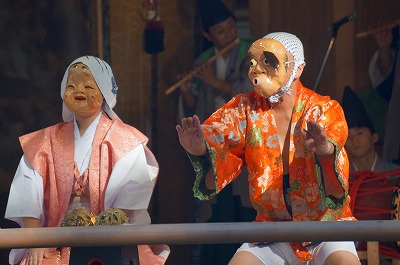
A mask of “Okame” is a face of a young woman. This mask is a pair of “Hyottoko“. People regard them as an ideal couple. In “Kagura”, this mask represents a deity, “Ameno-Uzume”.* Is “Okame” beautiful? I can’t answer this question. The standard of beauty changes time to time. But, there is one thing that is certain. She always smiles.
*Ameno-Uzume→Reference→Japan mythorogy
Oni (Ogre)
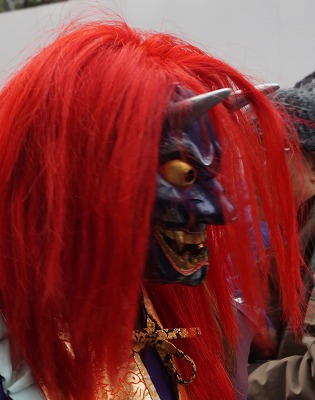
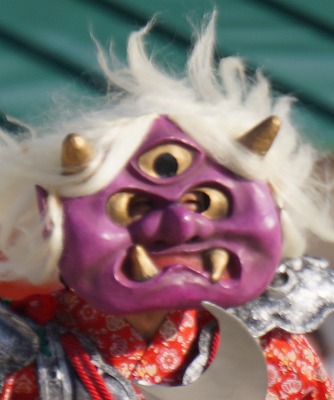

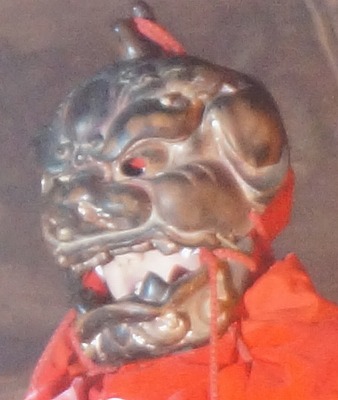


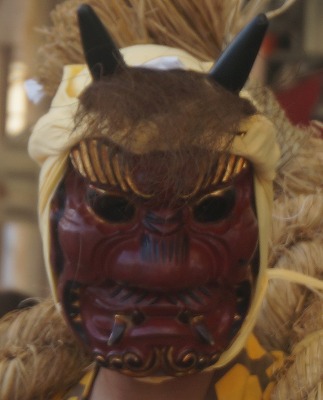

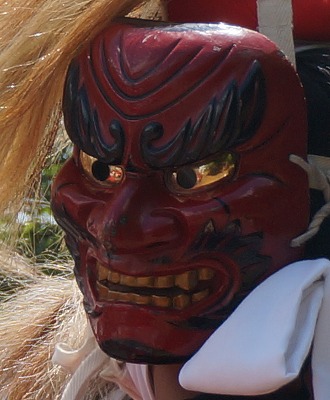


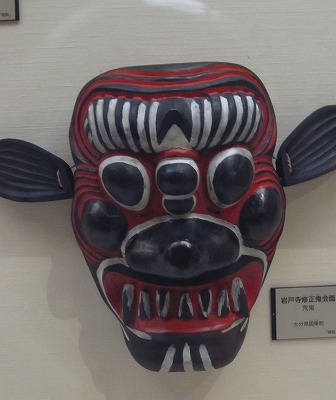
The word “Oni” meant “hiding stuff or people”. “Oni” sometimes meant enemies against the power of the administration of the Emperor, and other times, it meant strange happenings. It came to mean unnatural power in more recent years. At the same time, when people started to hold events called “Setsubun” (annual event to drive away evil spirits) , they needed something concrete to represent evil spirits. And so, people had created “Oni”. So we can often see their figures at the event of “Setsubun“. Now, not all “Oni” have evil spirits, they sometimes tell fortune to people.
Namahage


“Namahage” is one of the most famous masks and characters. Even though they are sacred visitors only in Oga region, they have become characters representing whole Akita prefecture.
And their molding design is rich in variety.
For more information→another article, ”Namahage” or “Namahage Sedo festival” (Category Akita prefecture)
Tengu (Sarutahiko)
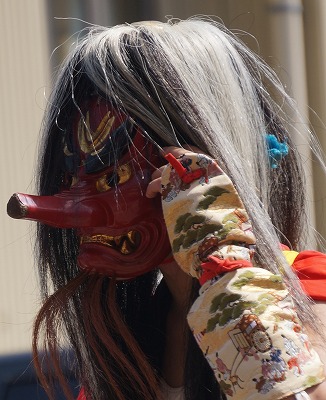
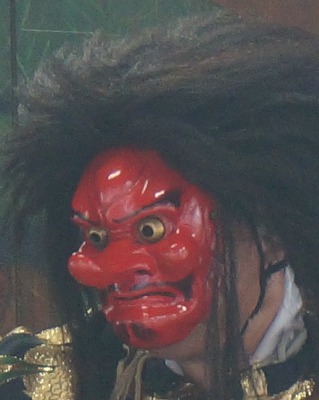


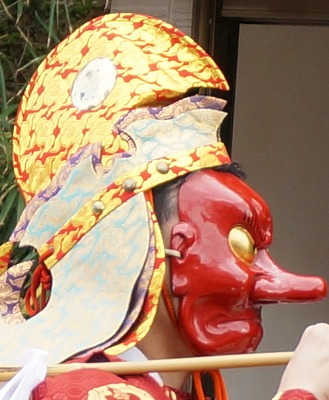

This mask’s feature is a red face and a long nose. It represents “Tengu” and “Sarutahiko“. Both are similar but completely different beings. “Tengu” is one of unnatural beings called “yokai“. He lives deep in the mountains and have super power. People believed that wars must be caused by Tengu. Tengu’s image came from monks practicing Buddhism in mountains.
On the other hand, “Sarutahiko”* is a deity. He guided deities of Amaterasu’s clan, so he usually walks at the head of parades of festivals.
*Sarutahiko→Refference→Japanese mythology and history “The grandson of Amaterasu comes down to this world”

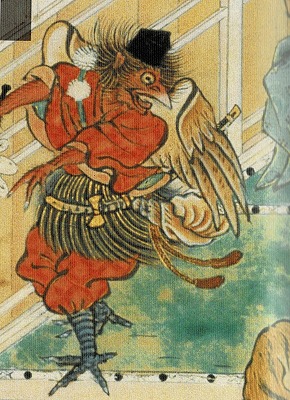

*Tengu’s two pictures from the book 「特別展 天狗推参!」神奈川県立博物館 1990
Masks of deities in Kagura
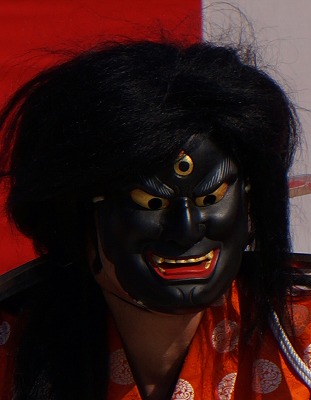
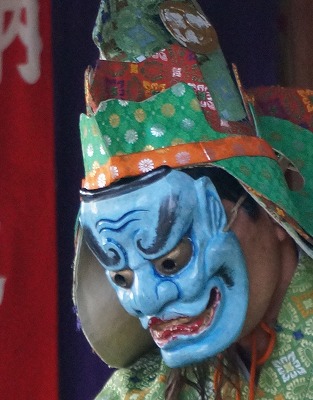
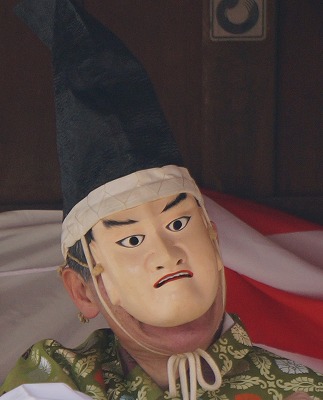
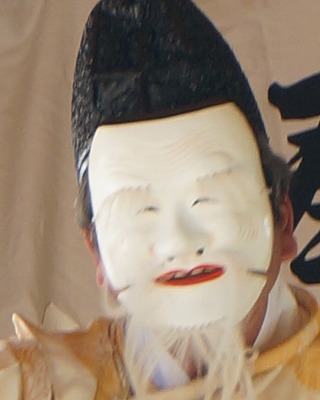

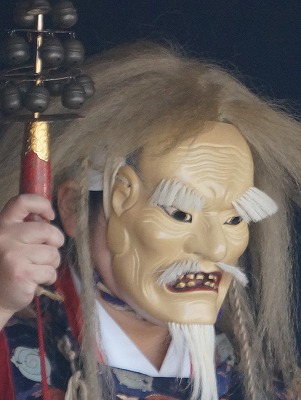
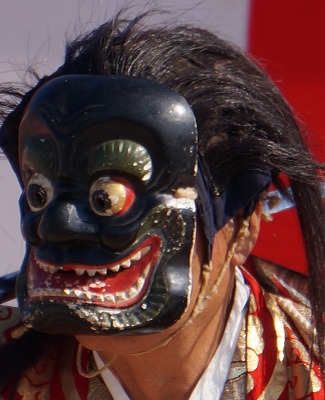




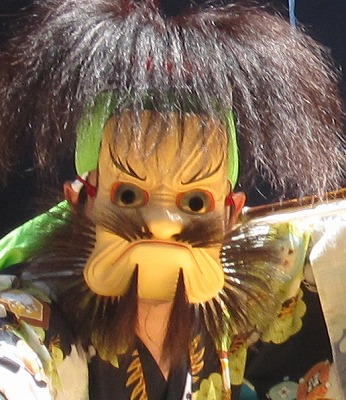
It is said that there are 8,000,000 (Yaoyorozu) deities in Japan. Japanese have assumed deities in everything. Many deities acted in Japanese mythology like Greek and Hindu mythology. “Kagura” is basically a play dramatizing mythology. So we can find various kinds of masks of deities on the stage of Kagura. When you travel to Japan and see Kagura events or festivals, you must see different deities all over Japan.
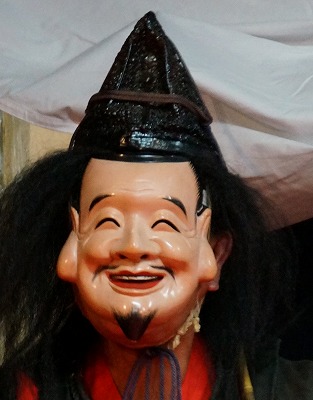
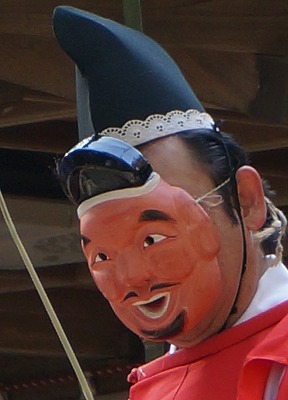
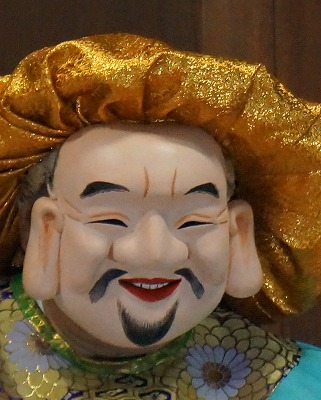
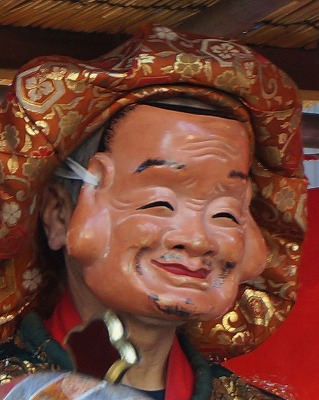
Among deities, we also find a unit of multiple deities. They are seven deities giving people various fortunes called “Shichifujin 七福神”. They often emerge at the beginning of the year. Both “Ebisu” and “Daikoku” often emerge as a unit especially. Ebisu always has a fishing rod and is catching a big red snapper. On the other hand, Daikoku always has a little mallet and wears a special cap on his head. They say if he swings his mallet, people can get fortune. They are the most popular of many deities.
Kitsune (the fox)
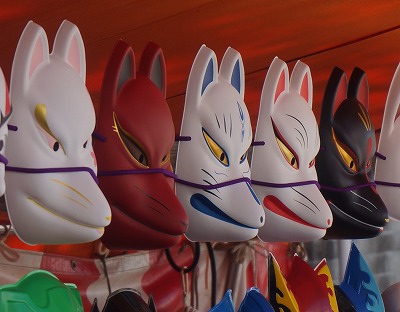
Many people may have an image like the left side picture.
The fox is a very popular animal along with raccoon dog or monkey in Japanese old tales including mythology. In mythology, the fox is the messenger of the deity of rice planting. So many people can see fox figures in some shrines. In old tales, the fox and raccoon dog bewitch people. The fox often takes the shape of a woman and sometimes get married with people.
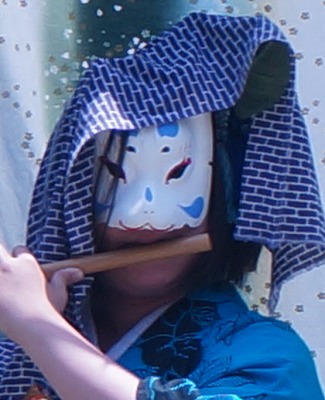


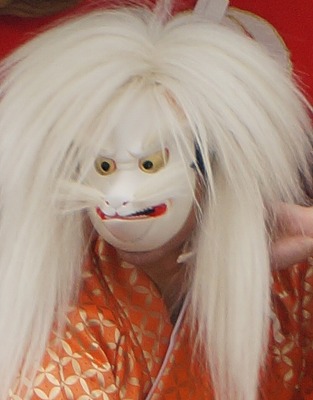
Others animals

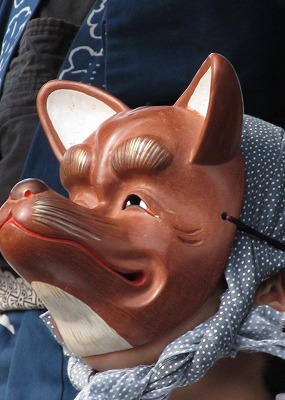

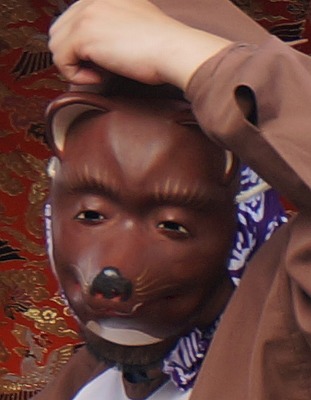
Raccoon dog Raccoon dog is a popular animal in Japanese old folktales. They hardly appear in Kagura. We can often see them in festivals. It is said that this animal bewitches people, however, they have less power than the fox. There remain various legends all over Japan.
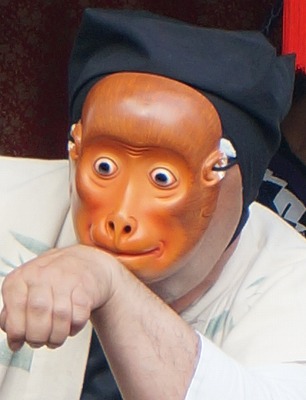
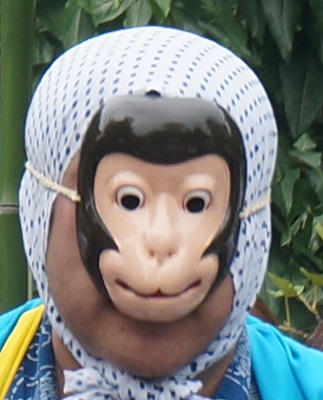

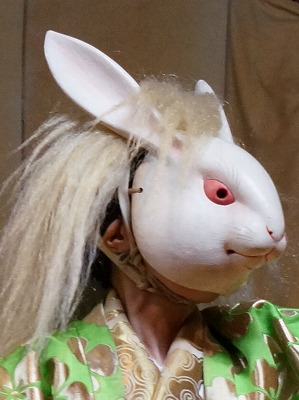
Monkeys are very popular animals in Japanese old tales, too. If you want to see these masks, you should go to some festivals. We can see tiger masks in Iwate prefecture. “The Tiger dance” is similar to “the Lion dance”. Rabbits play an active role in Japanese mythology. In the story, the rabbit is very clever but that cleverness backfires on the rabbit, and it was injured.

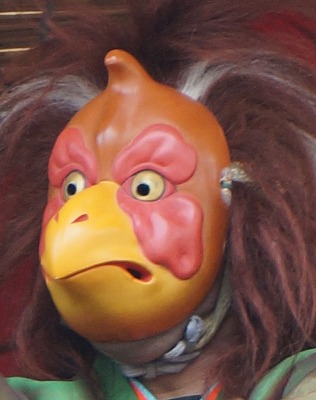

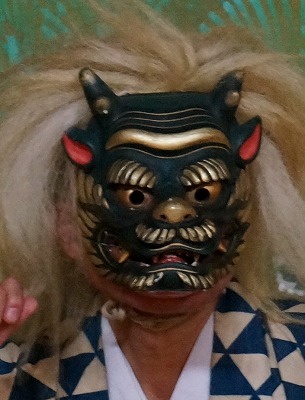
The birds and the fishes are characters which emerge only in special programs in Kagura. In Japanese mythology, a pheasants and ravens play active roles too. According to a mythology in which a three-legged raven guided the first Emperor to victory in a battle, this three-legged raven is designed on the emblem of the Japan National football team.
We hardly have a chance to see these masks.
Orochi
“Orochi” is the legendary monster. “Yamatano-orochi” is the correct name. Its image is similar to the dragon. This creature emerges in the famous myth. This legend tells that this monster had eight heads and eight tails. It came to a village every year, and devoured women. “Susano”, a deity, heard this, and slayed this monster. This legend is one of the highlights of Japanese mythology. This program of Kagura based on this tale is often played. Especially, the Kagura group in Iwami (Western region of Shimane prefecture) always plays a program about this monster. It is the most popular program in Kagura.
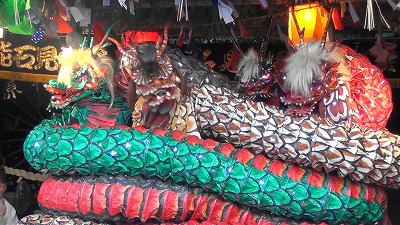
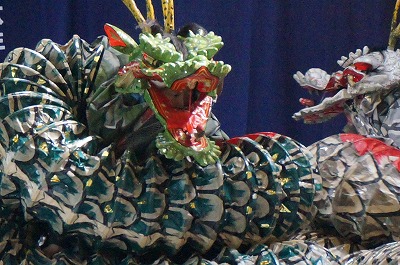

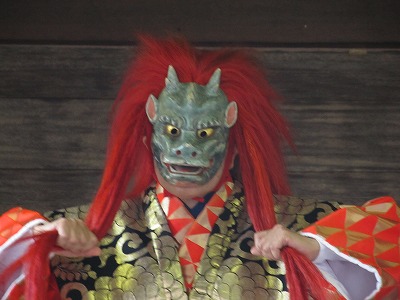

Shishi (the Chinese Lion)
“Shishi” is the most popular legendary animal in Asia, especially Japan. In this area, there did not exist the lion. So, all molding designs are products of the imagination. It is difficult to determine a single image because there are so many varying images.


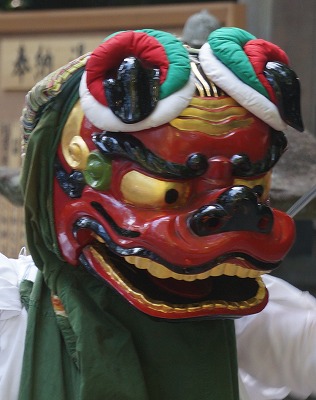
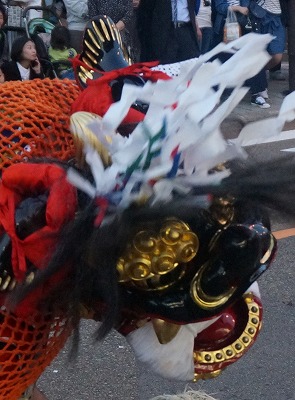
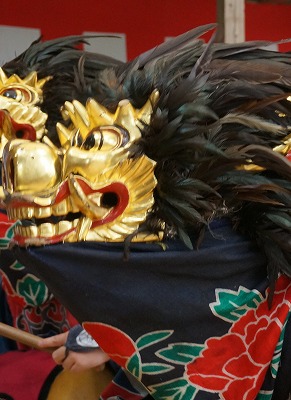

Shishi (dear)
The word “Shishi” had meant the animal collectively in ancient times. In Tohoku region (northern region of Japan), “Shishi-mai (dance) doesn’t mean the Lion Dance, but “the Dear dance”. “The Dear dance” has also many various kinds in each region.

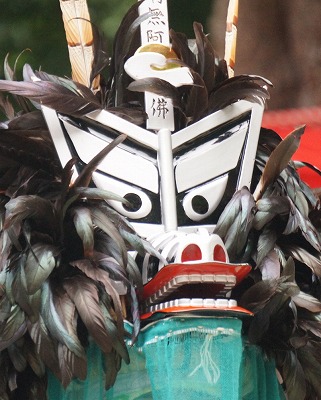

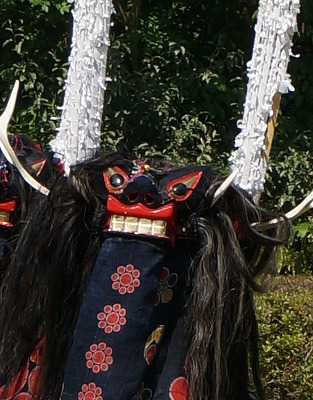
Others
There are many kinds of masks other than the ones above. Some are creatures of imagination like “yokai“, some are creatures not classified into any group.
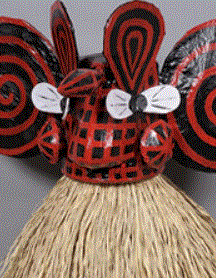
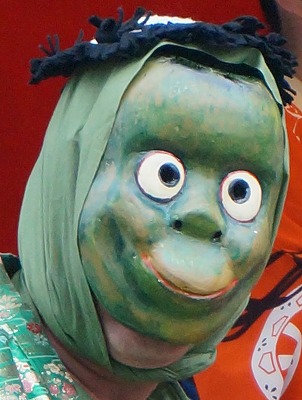
It is not too much to say that this country is a kingdom of masked characters. They appear on special days all over Japan. How are they active in festivals? This site will introduce each article in more detail. Please look forward to my next episode.
